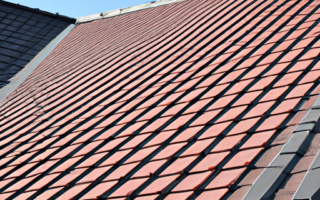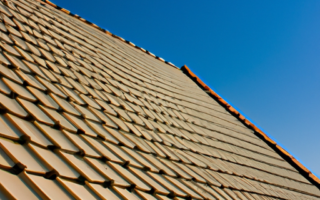Traditional Roof Construction Methods: A Historical Overview
Traditional roof construction methods have played a significant role in the evolution of roof construction. Throughout history, various techniques have been employed to create sturdy and durable roofs that withstand the test of time. In this article, we will explore the historical overview of traditional roof construction methods.
One of the earliest forms of traditional roof construction can be traced back to ancient civilizations. The Egyptians, for example, used a technique known as post and lintel construction. This method involved placing large upright posts and horizontal beams to create a framework for the roof. The gaps between the beams were then filled with materials such as mud, reeds, or animal skins to provide insulation and weatherproofing.
In other parts of the world, such as ancient Greece and Rome, a different technique called the truss system was prevalent. This method involved the use of interlocking triangular wooden trusses to support the roof. The advantage of this design was that it could span larger distances without the need for additional support columns.
As we move closer to the Middle Ages, the use of timber frame construction became prominent in Europe. This method involved the use of heavy timber beams and posts connected with mortise and tenon joints. Additionally, roofs were often covered with materials such as thatch or wooden shingles to provide protection against the elements.
In the 19th century, the Industrial Revolution brought about significant advancements in roof construction methods. The introduction of iron and steel allowed for the creation of more robust and longer-lasting roofs. Additionally, the use of prefabricated materials became more widespread, leading to quicker and more efficient construction processes.
In recent decades, modern innovations and technologies have revolutionized roof construction even further. The use of lightweight materials such as concrete tiles, asphalt shingles, and metal roofing has become prevalent. Additionally, the development of advanced roofing techniques, such as green roofs and solar panels, has allowed for the integration of sustainability and energy efficiency into roof design.
In conclusion, the evolution of roof construction from traditional methods to modern innovations is a testament to human ingenuity and continuous improvement. Each era has brought about new techniques and materials, resulting in stronger, more durable, and functionally diverse roofs. As we continue to advance, it will be intriguing to see what future innovations will shape the roofs of tomorrow.
Advancements in Roofing Materials and Techniques: From Traditional to Modern
In the world of construction, one of the most crucial elements of any building is its roof. Over the years, roof construction has evolved significantly, with advancements in both materials and techniques. This article will explore the evolution of roof construction, specifically focusing on advancements in roofing materials and techniques, from traditional methods to modern innovations.
Traditional Roofing Methods
In the past, traditional roof construction relied heavily on natural materials such as thatch, clay, and wood. Thatch roofs, made from straw or reeds, were commonly used in ancient civilizations. They provided an effective layer of insulation and were readily available in natural surroundings. Clay tiles were also widely used for roofing, particularly in countries with a Mediterranean climate. They offered durability and excellent thermal properties.
Wood shingles, on the other hand, were popular in regions where wood was abundant. They were lightweight and easy to install, but they required regular maintenance and were susceptible to fire and rot.
Advancements in Roofing Materials
As technology progressed, new roofing materials were introduced, revolutionizing the industry. One significant advancement was the development of asphalt shingles in the early 20th century. Asphalt shingles became a popular choice due to their affordability, versatility, and ease of installation. They also offered improved fire resistance compared to wood shingles.
Metal roofing materials also gained popularity over time. Initially used primarily for industrial and commercial buildings, metal roofs are now commonly found in residential construction as well. Metal roofs are known for their exceptional durability, longevity, and energy efficiency. They can withstand extreme weather conditions and require minimal maintenance.
Another modern roofing material is synthetic or composite roofing, typically made of plastic or rubber. These materials mimic the appearance of natural materials such as slate or wood shakes while providing superior durability, resistance to moisture, and a longer lifespan.
Modern Roofing Techniques
In addition to advancements in materials, roofing techniques have also evolved to improve efficiency and durability. One notable technique is the introduction of the truss system, which allows for larger and more complex roof designs. Trusses provide better structural integrity and enable the use of lighter roofing materials.
The use of specialized tools and equipment, such as pneumatic nail guns and power shears, has made roof installation faster and more precise. This has contributed to the overall improvement in the quality and efficiency of roof construction.
Furthermore, advancements in waterproofing technology have led to the development of more effective roofing membranes and coatings. These materials enhance the roof’s ability to prevent water infiltration, improving the building’s overall longevity and energy efficiency.
In conclusion, the evolution of roof construction has witnessed significant advancements in both materials and techniques. From traditional thatch roofs to modern synthetic materials, the roofing industry has embraced innovation to meet the growing demands of durability, efficiency, and aesthetics. As technology continues to advance, it is likely that we will see even more exciting developments in the future of roof construction.
The Role of Technology in Roof Construction: Innovations and Trends
The role of technology in roof construction has greatly evolved over the years, leading to innovative methods and trends that have transformed the industry. With advancements in materials, tools, and techniques, technology has played a crucial role in improving the durability, efficiency, and sustainability of roofs.
One of the key innovations in roof construction is the development of synthetic roofing materials. Traditional materials like natural slate and wood have been replaced with synthetic alternatives such as polymer-based shingles, tiles, and membranes. These materials are designed to imitate the look and feel of traditional options while offering superior performance in terms of durability, resistance to weather elements, and ease of installation.
In addition to materials, technology has also revolutionized the tools and equipment used in roof construction. Traditional manual methods have been replaced with power tools and machinery that enhance efficiency and accuracy. High-powered nail guns, cutting tools, and robotic systems have made the installation and repair processes faster and more precise. This not only saves time but also reduces the risk of errors and accidents.
Furthermore, the integration of technology has enabled the incorporation of smart systems in roof construction. Smart roofs equipped with sensors, automation, and remote monitoring capabilities have become increasingly popular. These roofs can adjust their settings based on weather conditions, reducing energy consumption and optimizing insulation. They can also provide real-time data on potential leaks, damage, or maintenance needs, enabling proactive repairs and minimizing costly repairs.
In recent years, sustainable roofing solutions have gained significant traction, driven by environmental concerns. Technology has played a crucial role in developing green roofing options such as solar panels, vegetative roofs, and cool roofs. Solar panels integrated into the roof provide renewable energy, reducing reliance on fossil fuels. Vegetative roofs increase energy efficiency, reduce stormwater runoff, and enhance insulation. Cool roofs designed with reflective materials help lower energy consumption by reducing heat absorption, thereby decreasing the need for air conditioning.
As technology continues to advance, the role of innovation in roof construction will only become more prominent. From the development of new materials to the incorporation of smart systems and sustainable solutions, technology is reshaping the way roofs are designed, built, and maintained. With each new innovation, the industry moves closer to achieving long-lasting, energy-efficient, and environmentally friendly roofs.
Sustainable Roofing Solutions: Environmental Considerations in Modern Roof Construction
Sustainable Roofing Solutions: Environmental Considerations in Modern Roof Construction
As we strive for more environmentally friendly solutions in all aspects of construction, the roofing industry is no exception. The evolution of roof construction has seen a shift towards sustainable roofing solutions, with a focus on reducing the environmental impact of buildings. In this article, we will explore the environmental considerations in modern roof construction and the innovative solutions being implemented in the industry today.
One major aspect of sustainable roofing is the choice of materials. Traditional roofing methods often involve the use of asphalt shingles, which are not eco-friendly due to their production process and composition. However, modern innovations have introduced sustainable alternatives such as recycled metal roofing, solar tiles, and green roofs.
Recycled metal roofing is gaining popularity as it is made from recycled materials such as aluminum or steel. This not only reduces the demand for virgin materials but also has a longer lifespan compared to traditional asphalt shingles. Additionally, metal roofing is highly reflective, which helps in reducing energy consumption by keeping the building cooler during hot weather.
Solar tiles are another sustainable roofing solution that harnesses the power of the sun to generate electricity. These tiles are designed to seamlessly integrate with traditional roofing materials and can significantly reduce the reliance on non-renewable energy sources. With advancements in technology, solar tiles have become more efficient and aesthetically pleasing, making them an attractive option for environmentally conscious homeowners and businesses.
Green roofs, also known as living roofs, are becoming increasingly popular in urban areas. These roofs are covered with vegetation and provide numerous benefits, including improved air quality, reduced urban heat island effect, and stormwater management. By absorbing rainfall, green roofs reduce the strain on drainage systems and help mitigate the risk of flooding. Additionally, they provide insulation, reducing energy consumption and lowering carbon emissions.
In addition to the choice of materials, sustainable roof construction incorporates other environmental considerations. Proper insulation is crucial to reduce energy loss and increase the overall energy efficiency of buildings. The use of insulation materials with high R-values, such as spray foam or natural fibers, helps maintain a comfortable indoor temperature while reducing the need for excessive heating or cooling.
Furthermore, the installation of rainwater harvesting systems can contribute to sustainable roof construction. Collecting rainwater allows for its reuse in irrigation and flushing toilets, reducing the demand for freshwater resources. This not only conserves water but also lowers the strain on municipal water systems.
In conclusion, the evolution of roof construction has seen a shift towards sustainable solutions that prioritize environmental considerations. The choice of materials, such as recycled metal roofing, solar tiles, and green roofs, plays a significant role in reducing the ecological footprint of buildings. Moreover, proper insulation and rainwater harvesting systems further contribute to sustainable roof construction. As the construction industry continues to prioritize environmental sustainability, it is essential to embrace these modern innovations and incorporate them into future roofing projects.



